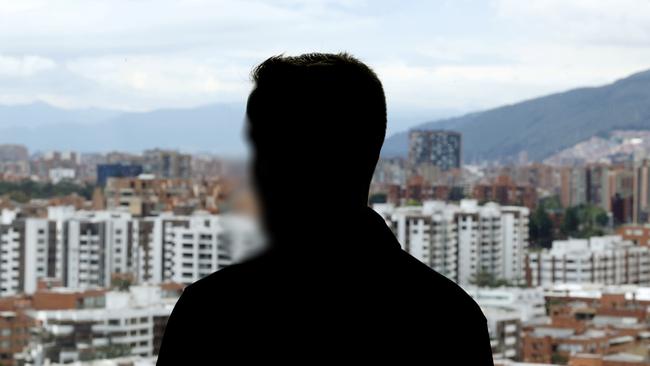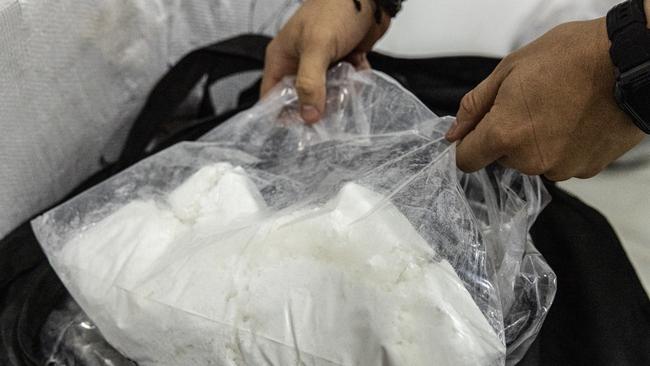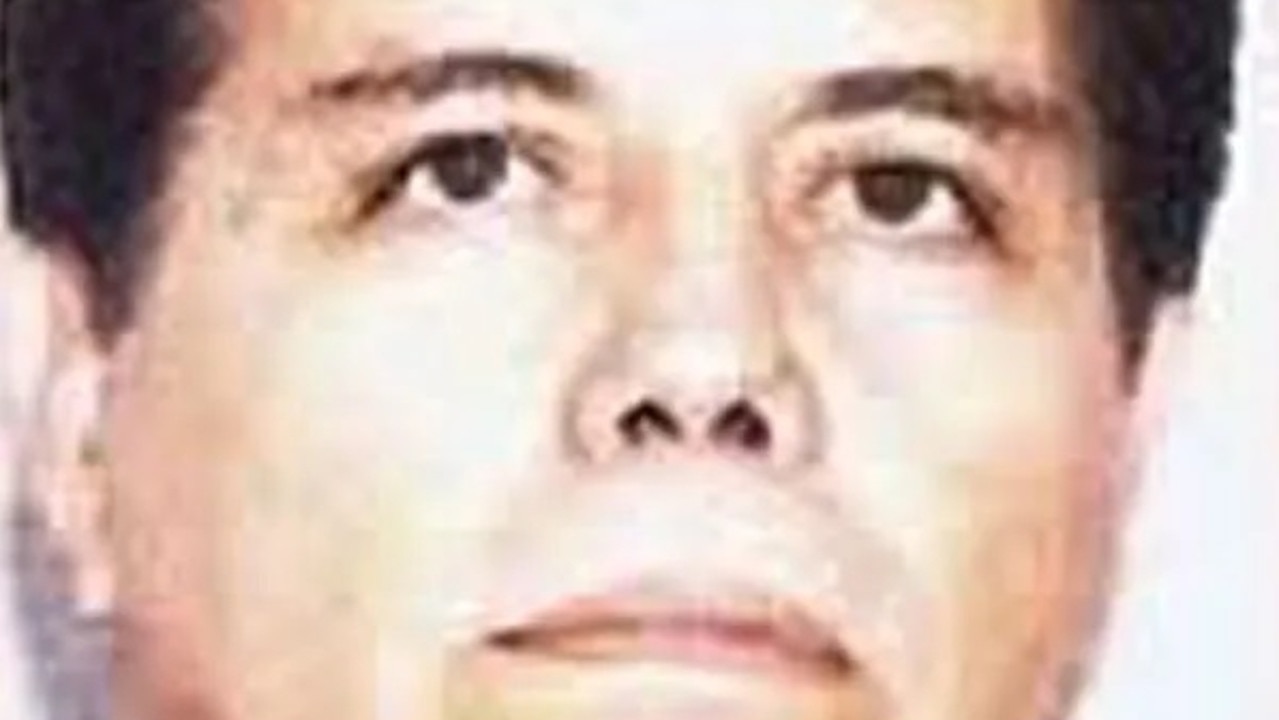How overseas drug cartels make billions from Australians high on coke and ice
This is why the cost of party drugs is rising, leaving users with blood on their hands as it kills cops every week. Watch the second episode of Narcos on the front line now.

Narcos on the Front Line
Don't miss out on the headlines from Narcos on the Front Line. Followed categories will be added to My News.
Exclusive: Secret new intelligence reveals Colombian and Mexican cartels are diverting drug shipments from North America and Europe to Australia because they can make mega profits here.
The ruthless, money-hungry Sinaloa and CJNG cartels are targeting Australia’s cashed up cocaine and ice users who pay some of the highest prices in the world for drugs.
More than 500,000 Aussies regularly use cocaine or ice, with demand surging.
A kilogram of ice costs $400 to make in Mexico, but sells for $250,000 a kilogram in Australia.
Cocaine is even more expensive in Australia – it costs $1500 to make in Colombia but sells for up to $300,000 a kilogram here.
A gram can cost up between $350 and $400, but cocaine use climbed 80 per cent in five years despite the crippling cost.
Wholesale cocaine prices were said to have dipped in March to under $250,000 but have recovered because dealers began restricting supply.
The Narcos on the front line docuseries uncovered the supply shift during interviews on the ground in Colombia, Panama and Mexico for a special seven-day investigation into the war on drugs.
In Cartagena, a port town on the Caribbean Sea, Colombian National Police showed how much money was being made from cocaine.
Watch episode 2 of the Narcos on the front line docuseries above.

A small room contained 800kg of cocaine worth $240 million – part of a 2 tonne shipment seized a day earlier.
Police in Latin America were stunned at the prices Australians paid for drugs.
“That’s crazy. I don’t think there is a more lucrative market (than Australia),” Commissioner General Felipe de Jesús Gallo Gutiérrez, head of criminal investigations at Mexico’s Fiscalia General police force, said.
“That means that there is a really high profit margin.”
An Australian Federal Police (AFP) officer based in Latin America said an “upswing of intelligence” in late 2022 revealed “market cocaine suppliers that traditionally targeted the North American and European market were going to start targeting Australia based upon the high value of cocaine”.
“Like any business they are targeting the most lucrative market and now looking to switch to the non-traditional Australian market just based on profit margins,” the AFP officer speaking on the condition of anonymity said.
Australians spend more than $10 billion each year on illicit drugs – or $28 million each day.
The drug trade comes as a cost to source countries like Colombia and Mexico.
There were more than 30,000 murders in Mexico in 2022 – more than 80 per day – as cartels battle for supremacy to control the billions of dollars to be made from ice and cocaine.
Mexico’s navy, known as SEMAR, provided an escort for Narcos on the front line during its tour of the nation’s ports and methamphetamine labs.

Special forces marines, travelling in a ute with a specially designed rollbar and seat configuration in the tray and carrying M16 machine guns and extra magazines of ammunition, met our group at the Zihuatanejo airport.
Four Marines, two standing and the other two seated facing either side of the ute, were on constant high alert during the two-hour drive to the port of Lazaro Cardenas.
Mr Gallo said while drugs went from Mexico into the United States, an endless supply of guns came back, with the Mexican market a target for gun traffickers.

“We’ve verified that three or four days after someone purchased a weapon in Texas we have it here in Mexico and it’s brand new,” Mr Gallo said.
“Weapons distributors and traffickers are aware that the volumes that they are manufacturing is not the correct amount for the US market, it actually exceeds the amount of the market in the US, especially of those large weapons that are the ones preferred by the cartels, which are quite large weapons,” he said.
The violence in Mexico is brazen – a man was executed in a Starbucks in Mexico City in broad daylight in April.

Cartels were also blamed for the kidnapping and murder of customs official Sergio Emmanuel Martínez Covarrubias in May.
He had just been appointed to run the port of Manzanillo, a key drug route, where he brought in tough new rules.
And three human heads and a narco banner – a homemade flyer advertising cartel crimes – were dumped in front of a Mexican army barracks in Cancun on May 29.
Meanwhile, Colombia is battling a wave of police executions at the hands of “narco terrorists”.
“Australian demand is driving the supply of cocaine in Colombia, and that’s fuelling narco terrorists,” the AFP officer said.

“That’s fuelling attacks on police, it’s fuelling bombings of government and police buildings.
“So they (the Colombian National Police) want to work closely with this because they want to stop Australian money getting in the hands of people in Colombia that are going to do them harm,” the officer said.
Colombian hit men get paid as little as $760 ($500USD) to murder a cop.
“The price of a couple of grams of cocaine, that’s the same price that the people supplying that will pay to have a police officer killed in Colombia,” the AFP officer said.
“So the purchase of two or three grams of cocaine in a Sydney nightclub might result in the death of a Colombian police officer.”
Drug lords have been waging a campaign called the Pistol Plan in Colombia.
They are offering cash payments to sicarios (hit men) in retaliation for the arrest of drug lord Darío Antonio Úsuga, who was extradited to the United States on cocaine charges.

At least 61 officers were killed last year, with 30 criminal groups offering a ceasefire if their members were not jailed for drug offences.
Colombian police are devastated at the loss of life, but remain determined to stand up to the cartels.
“We have wives without their husbands. We have children without their parents,” Brigadier General Olga Patricia Salazar Sanchez of the Colombian National Police said.
“Unfortunately, there will be many more police officers every day that will be sacrificing their lives for this fight. However, this is our fight that we are committed to continue with every day. We will not stop.”
Colombia’s top cop, Major General William Salamanca, flew in by helicopter for an interview for this article following meetings with the nation’s president Gustavo Petro.
Major General Salamanca, who was appointed to the role in May, acknowledged the risks his officers face.
“As long as there’s supply and demand, there’s going to be a cost and both states pay for this cost,” he said.
“Both societies are losing, Australians and Colombians. So we need to continue strengthening our efforts to fight this threat”.
Originally published as How overseas drug cartels make billions from Australians high on coke and ice



